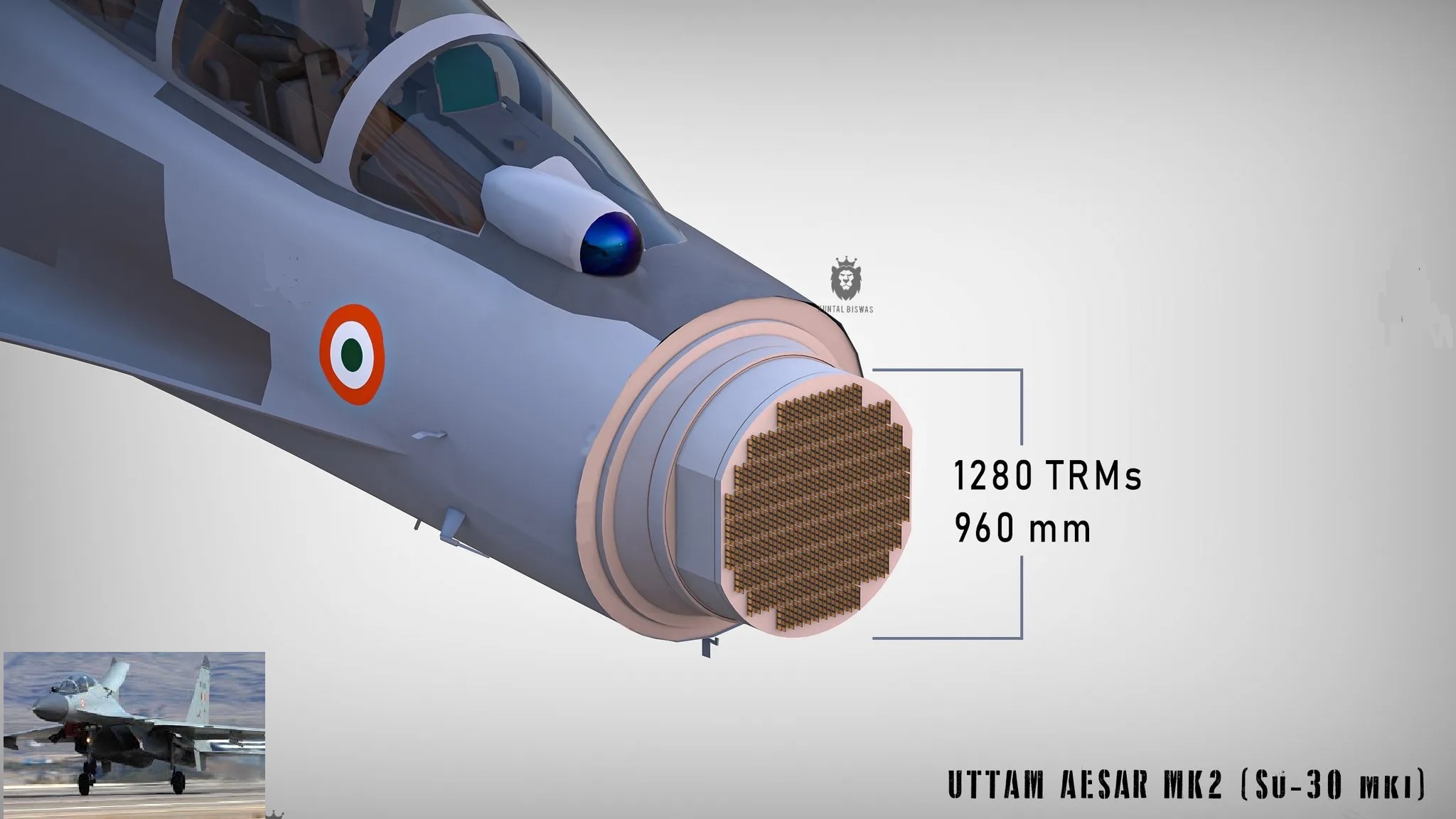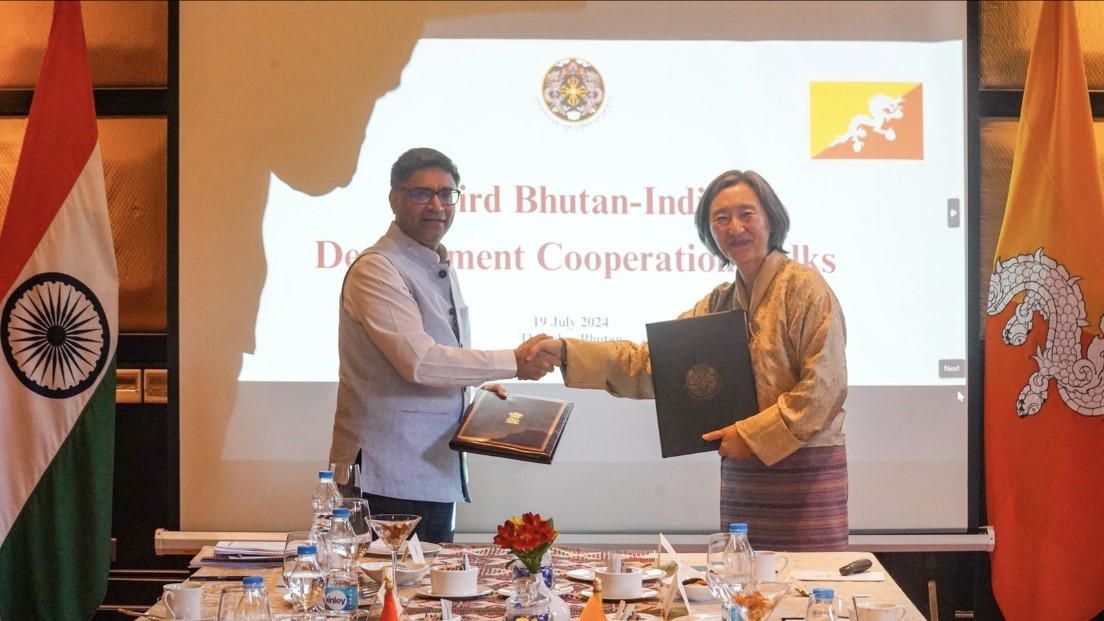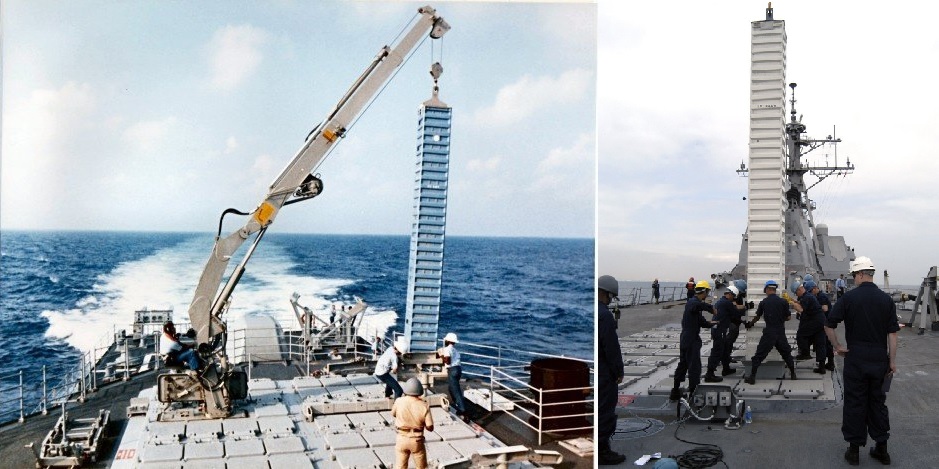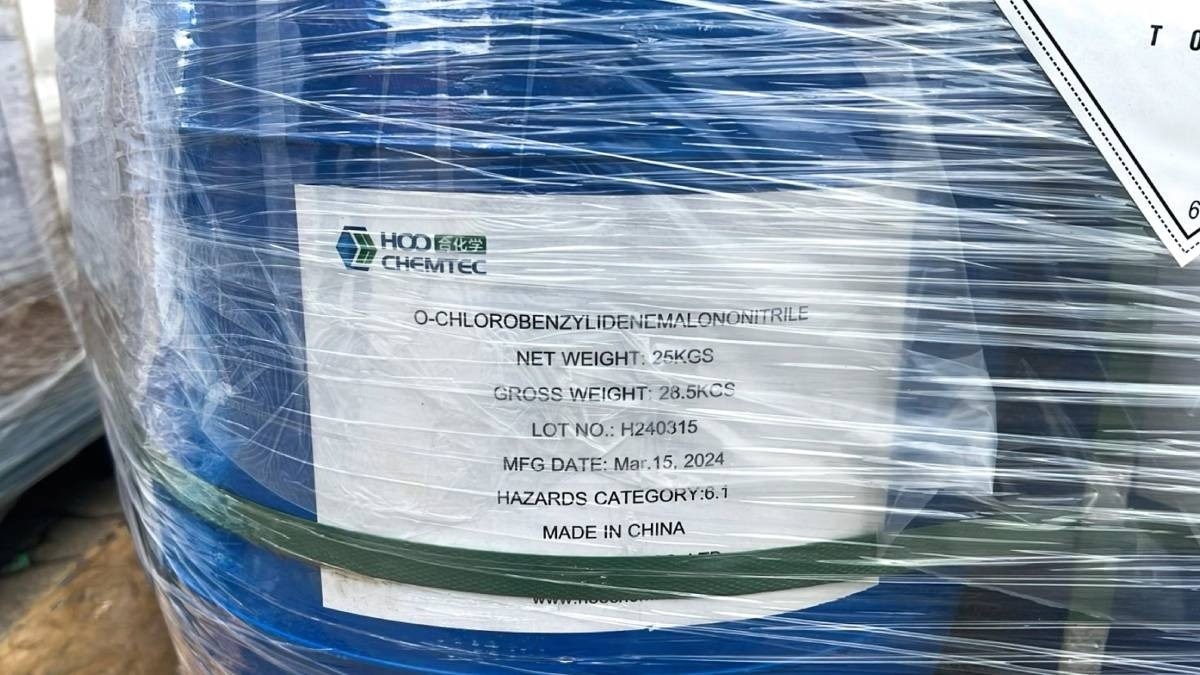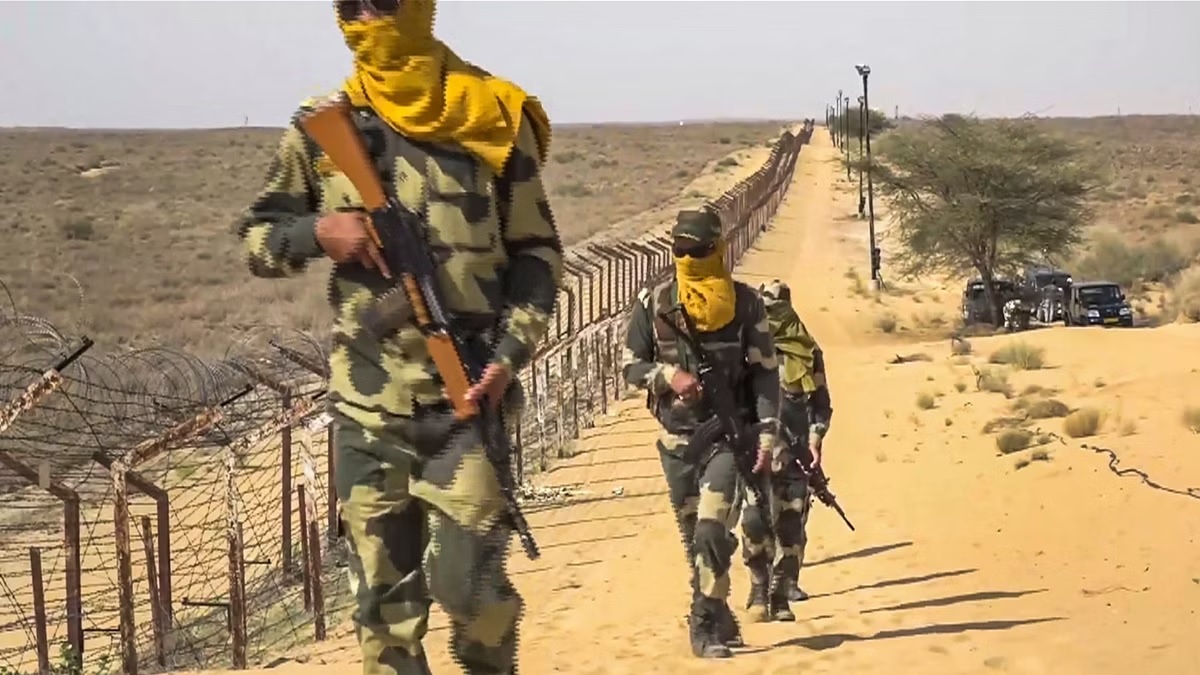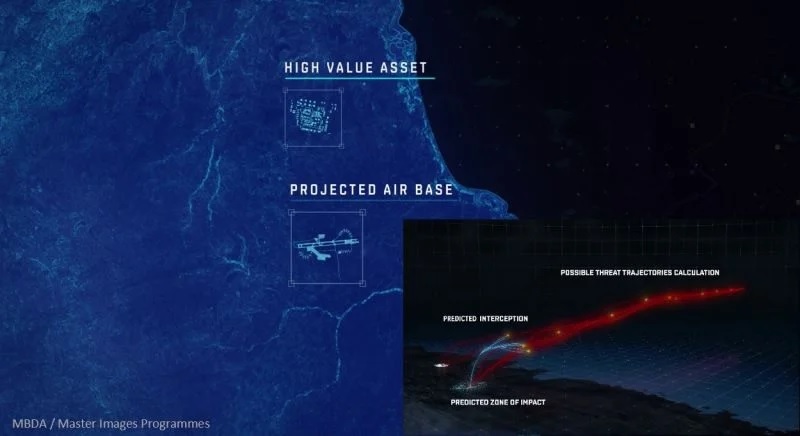India
In a significant move towards enhancing its air combat capabilities, the Indian Air Force (IAF) is set to upgrade its fleet of Sukhoi Su-30MKI fighter jets with the indigenous Uttam Active Electronically Scanned Array (AESA) radar, developed by the Electronics and Radar Development Establishment (LRDE). This upgrade is part of the ambitious Super Sukhoi program, aimed at modernizing the IAF's premier multi-role combat aircraft.The Uttam radar represents a cutting-edge advancement in radar technology, incorporating Gallium Nitride (GaN) based components. This offers superior range, performance, and efficiency compared to traditional Gallium Arsenide (GaAs) based systems. The Su-30MKI, with its large nose cone, is ideally suited to house the radar's 1800 to 2200 Transmit/Receive (T/R) Modules, enabling significant improvements in detection and tracking capabilities.The Super Sukhoi program is poised to overhaul approximately 150 out of the 260 operational Su-30MKIs, replacing their existing radars with the Uttam AESA system. This radar has already proven its mettle, having undergone 230 hours of airborne testing on Tejas fighter jets and an executive jet. The program's success is expected to greatly enhance the air superiority of the Su-30MKI fleet, positioning them as formidable assets in India's aerial defense strategy.The Uttam AESA radar isn't limited to the Su-30MKI alone. It is also slated for integration into other key Indian air weapon systems, including the indigenous Tejas fighter jet and the upcoming HAL Advanced Medium Combat Aircraft (AMCA) stealth fighter project. With the completion of technology transfer, Hindustan Aeronautics Limited (HAL) will spearhead the production and integration of the radar, with an advanced variant known as 'Virupaksha' specifically tailored for the Su-30MKI post-upgrade.In addition to the radar upgrade, the Super Sukhoi program encompasses a suite of enhancements aimed at bolstering the Su-30MKI's combat effectiveness. These include advanced munitions such as the indigenous anti-radiation missile RudraM and the long-range subsonic cruise missile Nirbhay, alongside anti-ship missiles and the extended-range BrahMos missiles. The aircraft will also receive a state-of-the-art cockpit with modern touchscreen displays, a new mission control computer, and a domestically produced AESA radar.The cockpit upgrades will provide pilots with a more intuitive interface and enhanced situational awareness, while the new mission control computer will be capable of managing the sophisticated technologies and expanded weaponry. The integration of the 'Virupaksha' AESA radar is expected to significantly boost the Su-30MKI's surveillance and detection capabilities, making it a formidable contender in air-to-air combat.Overall, the $7.5 billion Super Sukhoi program is a major stride towards indigenization and self-reliance in defense technology for India. By equipping its Su-30MKI fleet with the indigenous Uttam AESA radar and other advanced systems, India is poised to significantly strengthen its air combat capabilities, ensuring that its air force remains a powerful deterrent and a robust defensive force in the region.
Read More → Posted on 2024-07-21 14:37:30India
In a significant move to bolster its relationship with Bhutan, India has pledged ₹1,500 crore as part of an Economic Stimulus Programme over the next 18 months. This announcement came at the end of Foreign Secretary Vikram Misri's visit to Bhutan, where he engaged in wide-ranging discussions with the Himalayan nation's leadership. This commitment underscores the strong bond between the two countries, characterized by trust, goodwill, and mutual understanding.Misri's visit to Bhutan, his first foreign visit since taking office, included meetings with key figures such as Aum Pema Choden, his Bhutanese counterpart, King Jigme Khesar Namgyel Wangchuck, Prime Minister Dasho Tshering Tobgay, and Minister of Foreign Affairs and External Trade D.N. Dhungyel. These interactions emphasized the depth and breadth of the India-Bhutan partnership, covering various areas including development cooperation, energy, trade and investment, connectivity, technology, and people-to-people ties.The joint press release issued by both governments highlighted the exemplary nature of the India-Bhutan relationship, noting the satisfaction with the implementation of numerous development projects under the previous 12th Five Year Plan (FYP). Misri and Choden co-chaired the third India-Bhutan Development Cooperation Talks, focusing on the 13th FYP, which continues to prioritize developmental cooperation and mutual interests.As part of the discussions, the Bhutanese side presented proposals for the Project Tied Assistance (PTA), including the first tranche of projects for the 13th FYP. The two sides approved 61 projects amounting to Nu 49.58 billion (₹4,958 crore), spanning sectors such as connectivity, infrastructure, energy, skill development, education, health, and cultural heritage. Additionally, projects related to capacity building, industrial parks, sports, youth exchanges, digital economy, e-mobility, and space technology were also given the green light.This economic stimulus is part of a larger framework of support that India provides to Bhutan. Earlier in the year, during Prime Minister Narendra Modi's state visit to Bhutan, he announced India's development support of Nu 100 billion (₹10,000 crore) for Bhutan's 13th FYP. The Bhutanese government expressed deep appreciation for this invaluable support, which continues to drive socio-economic development in the country.The Economic Stimulus Programme is designed to frontload the full amount of ₹1,500 crore within the first 18 months, subject to the progress of implementation proposals. This initiative is expected to provide a significant boost to Bhutan's economy, helping it recover and grow amidst global challenges.The joint press release also highlighted the virtual inauguration of 19 schools in Bhutan, constructed during the 12th FYP period. This reflects the tangible outcomes of the development partnership, which has brought about significant improvements in various sectors within Bhutan.In summary, the ₹1,500 crore economic stimulus pledged by India to Bhutan not only strengthens the bilateral relationship but also underscores India's commitment to supporting Bhutan's developmental aspirations. This move is expected to further cement the ties between the two nations, fostering greater cooperation and mutual prosperity.
Read More → Posted on 2024-07-21 14:33:10World
The U.S. Navy recently marked a significant milestone with the successful ground-based test of a groundbreaking mechanism designed to reload the Vertical Launching System (VLS) cells while ships are underway at sea. This test, conducted at the Naval Surface Warfare Center Port Hueneme Division, showcases a pivotal advancement in naval warfare technology aimed at enhancing the fleet's operational flexibility and resilience.Back in 2023, during the American Society of Naval Engineers Combat Systems Symposium, Secretary of the Navy Carlos Del Toro underscored the critical importance of reloading VLS cells at sea, labeling it a top priority. He introduced the Transferrable Rearming Mechanism (TRAM), a concept developed over two decades, as the most viable solution to this challenge. Traditional reloading methods required ships to return to port and utilize cranes—a process fraught with dangers and impracticalities due to the relative motion of the vessels.TRAM is set to revolutionize this aspect of naval operations. Rich Hadley, Director of the NSWC Port Hueneme Underway Replenishment Division, highlighted in a press release the significance of overcoming key relative motion challenges with TRAM. This new capability promises to enable reloading operations even in significant sea states, thereby greatly enhancing the fleet's logistical flexibility and the volume and tempo of long-range fires.Historically, the Navy relied on pier-side reloading for its VLS cells, necessitating extended port visits. The increasing geopolitical tensions in regions like the Indo-Pacific and lessons learned from operational experiences in the Red Sea have amplified the need for an at-sea reloading capability. This urgency spurred rapid development, culminating in the establishment of the NSWC Port Hueneme testing facility in December 2023.Steve Brock, Senior Advisor to the Secretary of the Navy, lauded the successful demonstration of TRAM, stating, "This revolution in surface warfare will make our existing fleet even more formidable, both in sustained forward presence and lethality—and will create a powerful new near-term deterrent that will disrupt the strategic calculus of our adversaries."During the test, sailors from the Naval Expeditionary Logistics Support Group and USS Chosin (CG 65) played a crucial role in guiding a missile canister using the TRAM system, demonstrating the ability to reload a VLS cell. The system's specifics remain under wraps, but available information and images suggest that TRAM involves transferring missiles from a supply vessel to the warship, with missile canisters securely fastened to the crane throughout the process.Guided by the Naval Sea Systems Command, sailors from USS Chosin and the Expeditionary Reload Company participated in this critical test, which incorporated real-time analytics and in situ monitoring through advanced instrumentation. While the at-sea test is scheduled for the fall, the data gleaned from this ground-based trial will be invaluable in refining the system for its ultimate deployment.The TRAM system promises to usher in a new era for the U.S. Navy, enabling ships to reload missiles much like they refuel—via connected underway replenishment, maintaining speed and maneuverability in open ocean conditions. This advancement not only boosts the fleet's operational readiness but also enhances its strategic deterrent capabilities, marking a significant leap forward in naval warfare technology.
Read More → Posted on 2024-07-20 16:26:37India
The Indian Navy has issued a Notice to Airmen (NOTAM) about live missile firing exercises in the lower Bay of Bengal. These exercises, scheduled to run from the 19th to the 24th of this month, are set to take place in a significant stretch of ocean roughly 730 kilometers in length, located off the coast of Sri Lanka. This area is a busy marine traffic lane, so the announcement has raised some concerns among mariners and aviators.The purpose of these exercises is to enhance the Indian Navy’s operational capabilities and ensure a high state of combat readiness. This is a routine practice for the Navy, as maintaining proficiency in missile systems and other naval operations is crucial for national security and defense. However, the exact nature of the missiles being tested has not been disclosed, leading to speculation about the potential involvement of long-range systems.The NOTAM serves as a crucial warning for both maritime and aviation sectors. Mariners and aviators in the region have been advised to exercise extreme caution and strictly adhere to the restrictions set forth in the NOTAM. This includes altering routes and schedules to avoid the designated exercise area, which can cause significant disruptions in maritime traffic. The Indian Navy’s choice of such a large area suggests the possibility of extensive and complex missile tests, possibly involving multiple types of ship-based systems.These exercises come at a time of increased maritime activity and geopolitical tension in the region. The Bay of Bengal is a strategic area for international shipping routes, making any military activity here particularly sensitive. The presence of a major military exercise in such a crucial area underscores the Indian Navy’s commitment to maintaining a robust defense posture while highlighting the importance of preparedness in an unpredictable global environment.While some might see the timing and scale of these exercises as a response to regional dynamics, it’s also part of the Navy’s regular training schedule. Ensuring that the fleet is ready for any scenario is a top priority, and live firing exercises are a key component of this readiness. By practicing in real-world conditions, the Navy can better assess the performance of its missile systems and make necessary adjustments to tactics and strategies.In summary, the Indian Navy's missile firing exercises in the Bay of Bengal are a significant event with wide-ranging implications for maritime and aviation safety in the region. The NOTAM issued serves as an essential advisory for those navigating the area, reflecting the ongoing efforts to maintain a high level of operational capability and preparedness.
Read More → Posted on 2024-07-20 16:21:52World
In early May, a routine check at the Kattupalli port in Tamil Nadu turned up a troubling find. Customs authorities, acting on intelligence inputs, intercepted a shipment of Ortho-Chloro Benzylidene Malononitrile (CS gas) from Chengdu Shichen Trading Company Ltd in China to Rohail Enterprises in Pakistan. The cargo, carried by the Hyundai Shanghai, was en route from Shanghai to Karachi. While CS gas is commonly used for riot control, its potential as a chemical weapon makes it a tightly regulated substance under international agreements like the Chemical Weapons Convention.This incident has raised alarms about China's role in global proliferation networks. Historically, China has a track record of producing dual-use technologies—items that can serve both civilian and military purposes. Despite international regulations, Beijing has often been accused of sidestepping export controls. The seizure of CS gas is especially concerning given its potential use by Pakistani law enforcement against Baloch rebels, who have been a persistent thorn in the side of both Pakistan and China's joint economic ventures in the region.The China-Pakistan Economic Corridor (CPEC), a flagship project under China's Belt and Road Initiative, has faced significant opposition in Balochistan. Local nationalist groups, resisting what they see as exploitation of their resources, have carried out numerous attacks against CPEC infrastructure. The possibility that China is supplying Pakistan with CS gas to suppress these rebels suggests a deeper, more troubling level of involvement in Balochistan's internal conflict.This situation is part of a larger pattern of China's behavior in global trade, especially concerning dual-use goods. For years, China has been adept at bypassing international sanctions, supplying banned items to countries like Pakistan, North Korea, and Iran. This was highlighted in Germany's 2023 report from the Federal Office for the Protection of the Constitution, which noted that China plays a pivotal role in circumventing sanctions for these countries. Similarly, Austria's Directorate of State Security and Intelligence underscored China's central position in sourcing dual-use goods for Pakistan.One high-profile case involved Ilya Kahn, a tri-national resident of the United States, who was arrested for exporting semiconductors to sanctioned Russian military-linked businesses through a network of companies in China. This underscores the extent to which China is embedded in global proliferation networks, acting both as a supplier and a conduit for banned technologies.In April 2023, the U.S. imposed sanctions on three Chinese and Belarusian companies for allegedly supplying missile technology to Pakistan. China remains Pakistan's primary supplier of weapons and defense equipment, a relationship that has only deepened as both countries navigate international scrutiny and sanctions.The global community is increasingly wary of China's activities. European and U.S. agencies are closely monitoring the trade in dual-use technologies, recognizing the potential for these goods to be diverted for military use. Reports from various intelligence agencies highlight a disturbing trend: China is not only supplying these goods but also creating complex networks to obscure the true end-users, making enforcement of international regulations exceedingly difficult.The recent seizure at Kattupalli port is a stark reminder of the lengths to which China and Pakistan will go to pursue their strategic objectives. The covert supply of CS gas to Pakistan, intended for use against Baloch rebels, not only violates international norms but also exemplifies the dangerous intersection of economic ambitions and military strategies. As the global community continues to grapple with these challenges, the need for stringent enforcement of international regulations and greater transparency in global trade has never been more critical.
Read More → Posted on 2024-07-20 16:19:20India
In response to a surge in infiltration by highly trained Pakistani terrorists, the Indian Army has ramped up its counter-terrorism operations in the Jammu region. Intelligence reports indicate that around 50-55 terrorists have crossed the border with the intent to revive militant activities in the area. This alarming development has prompted the deployment of approximately 500 Para Special Forces commandos to neutralize the threat.The Para Special Forces, renowned for their rigorous training and high operational capabilities, have been tasked with hunting down these infiltrators. According to defence sources, this elite group will be operating alongside existing counter-terrorism units, leveraging their specialized skills to dismantle the terrorist networks.In addition to the Para Commandos, the Indian Army has reinforced its presence in the region by deploying a brigade-sized force of around 3,500 to 4,000 troops. These reinforcements are part of a broader strategy to counter Pakistan's proxy aggression and ensure the security of the area. The Army's top brass have been actively devising and implementing strategies to search and destroy the infiltrators, who are reportedly equipped with the latest weaponry and communication equipment.Intelligence agencies have also intensified their efforts, enhancing their apparatus to track and dismantle the support infrastructure aiding these terrorists. This includes targeting overground workers who provide logistical and operational support to the militants. The collaboration between intelligence agencies and military forces is crucial in disrupting the terrorist operations and preventing any potential attacks.The Indian Army's existing counter-terrorism infrastructure in the region, including the Romeo and Delta forces of the Rashtriya Rifles, has been mobilized to support the ongoing operations. These forces, along with regular infantry divisions, are working in coordination to ensure a comprehensive approach to the counter-terrorism efforts.The situation in Jammu underscores the persistent threat posed by cross-border terrorism and the need for robust security measures. The Indian Army's proactive stance and strategic deployments are aimed at safeguarding the region and thwarting any attempts to destabilize it. As the operations continue, the collaboration between various military and intelligence units remains pivotal in maintaining peace and security in the area.
Read More → Posted on 2024-07-20 16:14:34Space & Technology
Air travel in the United States was thrown into chaos on Friday morning as a significant Microsoft outage disrupted operations across the country. More than 1,100 flights were cancelled, and over 1,700 were delayed, leaving passengers stranded and frustrated.The disruption began when certain Microsoft cloud services ceased to function, leading to widespread communication issues for several major airlines. Passengers at airports nationwide found themselves stuck without clear information on when flights would resume. A United Airlines passenger recounted his ordeal, saying, "No one here knows anything, the gate agents said we all know as much as they do." His flight from Milwaukee to Washington was delayed for hours, both at the gate and on the tarmac. Another passenger, Mack, on his way home, expressed surprise upon learning that the outage was global. "I did not know that the internet was out. It is a global outage," he remarked. Giane, another affected traveler, shared her frustration, "I did not hear anything from the airline that I am traveling from. I just saw a news pop up on my phone...I am tired, I want to get home."The chaos was not limited to the aviation industry. Banks, media companies, food chains, brokerage houses, and railway networks also reported IT outages, demonstrating the far-reaching impact of the Microsoft disruption.CrowdStrike, a prominent American cybersecurity technology firm, clarified that the outage was not a result of a cyberattack but rather an issue with a software update. "We're investigating an issue impacting users' ability to access various Microsoft 365 apps and services," Microsoft announced on social media. The issue, linked to a software update from CrowdStrike, caused the notorious 'Windows blue screen of death' for many users.Despite the turmoil, CrowdStrike's President and CEO, George Kurtz, assured customers that the problem was isolated and a fix had been deployed. He emphasized that it was not a security incident or cyberattack. Microsoft CEO Satya Nadella also addressed the issue, stating that Microsoft was working closely with CrowdStrike to provide technical support and guidance.As the Federal Aviation Administration (FAA) noted, major airlines such as American Airlines, United Airlines, and Delta Air Lines issued ground stops due to communication problems. The FAA instructed air traffic controllers to inform airborne pilots about the ongoing issues. According to flight-tracking website FlightAware, over 1,100 flights were cancelled and more than 1,700 were delayed by 8:05 am ET.United Airlines released a statement saying, "A third-party software outage is impacting computer systems worldwide, including at United. While we work to restore those systems, we are holding all aircraft at their departure airports. Flights already airborne are continuing to their destinations." Similarly, American Airlines apologized for the inconvenience and mentioned they were collaborating with CrowdStrike to resolve the issue swiftly.The Microsoft outage not only highlighted the dependency of various industries on cloud services but also underscored the cascading effects a single technical glitch can have on global operations. As businesses and airlines worked to get systems back online, passengers and customers were left dealing with the fallout, showcasing the interconnected nature of today's digital infrastructure.
Read More → Posted on 2024-07-20 16:05:04India
In a recent development, the Indian Ministry of External Affairs (MEA) confirmed that efforts are underway to secure the early discharge of approximately 50 Indian nationals currently serving in the Russian armed forces. This move follows Prime Minister Narendra Modi’s visit to Moscow, where he directly addressed the issue with Russian President Vladimir Putin.MEA spokesperson Randhir Jaiswal provided insights during his weekly media briefing, stating, “We are aware of about 50 Indian nationals who currently wish to end their employment in the Russian armed forces.” The request for discharge has come from either the individuals themselves or their concerned family members, prompting the MEA to take swift action.The MEA has been actively engaging with Russian authorities at multiple levels, including the leadership level, to expedite the process. During his visit on July 8-9, Prime Minister Modi raised the issue with President Putin, who responded positively. Both nations are now working collaboratively to ensure the early discharge of these Indian nationals.This situation has been a matter of “utmost concern” for the Indian government. Last month, the MEA highlighted the urgency of the matter and called for immediate action from Moscow. The issue gained further prominence after the deaths of two Indian nationals serving in the Russian Army were reported in the ongoing Russia-Ukraine conflict, bringing the total number of such deaths to four.On June 11, the MEA reported the tragic deaths of two Indian nationals who were recruited by the Russian Army and had recently been killed in the conflict. This incident prompted the Indian government to demand a “verified stop” to further recruitment of Indian nationals by the Russian Army. The MEA emphasized that such activities were not in line with the spirit of the India-Russia partnership.In February, Hemal Ashwinbhai Mangua, a 23-year-old from Surat, Gujarat, died in a Ukrainian air strike while serving as a “security helper” in the Donetsk region. A month later, Mohammed Asfan, a 30-year-old resident of Hyderabad, succumbed to injuries sustained while serving on the frontlines with Russian troops in Ukraine.The deaths of these young men have intensified the Indian government’s efforts to ensure the safety of its citizens and prevent further recruitment into foreign conflicts. The MEA’s strong stance and the Prime Minister’s direct intervention signify the importance India places on the welfare of its nationals abroad.The cooperation between India and Russia in this matter highlights the diplomatic efforts being made to resolve the issue amicably and swiftly. The positive response from the Russian side is a step towards ensuring the safe return of Indian nationals wishing to leave the Russian armed forces.As the situation unfolds, the MEA continues to monitor developments closely, aiming for a resolution that safeguards the interests and lives of Indian citizens. The early discharge of these individuals from the Russian armed forces remains a priority, and both nations are committed to achieving this goal in the spirit of their longstanding partnership.
Read More → Posted on 2024-07-20 16:01:46India
In a tragic incident highlighting the harsh realities of border duty, a Border Security Force (BSF) officer and a jawan succumbed to extreme heat exposure while patrolling the Harami Nallah creek area along the India-Pakistan border in Gujarat. Assistant Commandant Vishwa Deo and Head Constable Dayal Ram, part of the 59th battalion, were undertaking a routine patrol when they were overwhelmed by the severe weather conditions prevalent in the region.The incident occurred on a Friday, during a long-range border patrol in the remote and challenging terrain of Harami Nallah. This area, known for its treacherous conditions, saw temperatures soaring between 34 and 36 degrees Celsius, combined with humidity levels as high as 80 to 82 percent. Despite their training and experience, the extreme heat and humidity proved to be fatal.Sources indicate that the patrol team ran out of water and energy fluids amidst the marshy conditions of Harami Nallah. The nearest base promptly rushed supplies to the team, but the extreme conditions had already taken their toll. By the time they were evacuated to a medical facility in Bhuj, it was too late to save them.This tragic event underscores the perils faced by BSF personnel guarding the borders under harsh and unpredictable conditions. The Gujarat Frontier of the BSF is responsible for an 826 km stretch of the India-Pakistan border, from Barmer in Rajasthan to the salty marshlands of the Rann of Kutch, including the Sir Creek area. Patrolling these areas requires immense physical endurance and resilience, qualities that both Assistant Commandant Vishwa Deo and Head Constable Dayal Ram exemplified.The BSF, in a statement, praised the bravery and dedication of the two men. "Their commitment to safeguarding the nation's sovereignty, even in the face of extreme danger, will never be forgotten," the spokesperson said. "Our thoughts and prayers are with their families, friends, and colleagues during this incredibly difficult time."This incident is not isolated. Just two months prior, a jawan deployed on the India-Pakistan border in Rajasthan's Jaisalmer also lost his life due to heat stroke. These occurrences highlight the need for enhanced measures to protect personnel from extreme weather conditions, including better access to hydration and medical facilities.The loss of Assistant Commandant Vishwa Deo and Head Constable Dayal Ram is a stark reminder of the sacrifices made by those who guard the nation's frontiers. Their heroism and dedication serve as a testament to the spirit and resilience of the BSF, ensuring the safety and security of the country even in the most adverse conditions.
Read More → Posted on 2024-07-20 15:59:24India
Manipur Chief Minister N. Biren Singh has announced that the border fencing along the India-Myanmar border will proceed despite local opposition. This decision comes in the wake of increasing concerns over infiltration, drug smuggling, and other illegal cross-border activities.The fencing project, spearheaded by the Union Home Ministry through the Border Roads Organisation (BRO), is aimed at enhancing security and maintaining demographic stability in the northeastern states bordering Myanmar. This region, known for its porous borders, has been a conduit for various illegal activities, prompting the central government to take stringent measures.Manipur shares a 398-kilometer-long border with Myanmar, a significant stretch that poses considerable challenges in terms of security management. In addition to Manipur, other northeastern states like Arunachal Pradesh, Nagaland, and Mizoram also share unfenced borders with Myanmar, collectively spanning 1,643 kilometers. The decision to fence these borders has not been without controversy, particularly due to the Free Movement Regime (FMR), which allows residents within 16 kilometers of the border to move freely between India and Myanmar without requiring passports or visas.Local leaders in Churachandpur district have reportedly threatened workers involved in the fencing project, urging them to cease their activities. Despite these threats, Chief Minister Singh has assured that the issues will be resolved and the project will continue. He emphasized the importance of the fencing in curbing infiltration and drug smuggling, which have been persistent problems in the region.Union Home Minister Amit Shah had previously announced the termination of the FMR and the initiation of the border fencing project to bolster national security and safeguard the demographic composition of the northeastern states. This decision has met with resistance, particularly from Mizoram and Nagaland, where local communities have strong ties across the border and rely on the FMR for maintaining these connections.In tandem with the border fencing efforts, the Manipur government has been cracking down on the issuance of fake Inner Line Permits (ILPs). The ILP system, established under the Bengal Eastern Frontier Regulation of 1873, regulates the entry of non-residents into certain areas of northeastern India. Recent raids led to the discovery of operations producing fake ILPs, resulting in the arrest of nine individuals, including a clerk from the labor department. These fake permits, produced at various computer centers and mobile repair shops, were believed to number around 3,500.To further investigate and address this issue, a Special Investigation Team (SIT) led by an Additional Superintendent of Police-rank officer has been formed. The Chief Minister has urged those in possession of fake ILP cards to surrender them to the authorities immediately. He also highlighted the implementation of an ILP facial recognition system to identify and catch defaulters.Despite the local resistance and the challenges involved, the Manipur government remains steadfast in its commitment to secure the border. The fencing project, coupled with stricter enforcement of the ILP system, represents a significant step towards enhancing the state's security and stability.This firm stance underscores the broader efforts by the Indian government to tackle cross-border issues and ensure the safety and integrity of its northeastern regions, even as it navigates the complex socio-political landscape of the area.
Read More → Posted on 2024-07-20 15:56:59World
In the heart of Paris, a significant gathering took place under the auspices of OCCAR (Organisation Conjointe de Coopération en matière d'Armement), as Subject Matter Experts (SMEs) from the HYDIS (European Hypersonic Defence Interceptor System) contributing nations and consortium representatives convened for the second User Requirements Workshop. This event was pivotal in advancing the discussions on the operational scenarios that the future European Hypersonic Missile Interceptor might encounter during its deployment.This workshop, the second in a series of four dedicated technical meetings, aimed to achieve a major milestone for the HYDIS programme: the "Solution Space Review" (SSR). These meetings are critical for aligning national perspectives on key evaluation criteria, which will guide the selection of the most promising interception concept developed during the HYDIS Concept Phase.The HYDIS programme, launched under the TWISTER (Timely Warning and Interception with Space-based Theatre Surveillance) PESCO initiative, represents an unprecedented collaborative effort. The programme is supported by 19 partners and more than 30 subcontractors from 14 European countries, including France, Germany, Italy, and the Netherlands, which collectively contribute around EUR 60 million. The EU Defence Fund (EDF) further supports the initiative with an additional EUR 80 million in co-financing.The recent workshop focused on enhancing cooperation between industry and participating nations to refine the enabling capabilities of the interception architecture. This includes advanced space-based early warning and tracking capabilities, ground sensors, platform integration, and considerations of sustainability and affordability. Such cooperation is crucial for developing a robust and effective defence system against hypersonic threats.During the 3-year Concept Phase, the HYDIS programme aims to achieve three primary objectives: 1. Selecting the most suitable counter-hypersonic interceptor concept, potentially with various variants, along with the associated weapon systems architecture.2. Maturing the necessary technologies for implementing the chosen counter-hypersonic concept in subsequent assessment and development phases.3. Establishing an industrial network to develop future counter-hypersonic missile systems.The HYDIS programme is not only a technological venture but also a strategic one. It enhances European resilience and technological sovereignty in missile defence, fostering greater cooperation and interoperability between EU countries and the defence industry. This collaboration is crucial for maintaining a competitive edge in the rapidly evolving field of hypersonic threats, ensuring that Europe remains secure and well-prepared for future challenges.The second HYDIS User Requirements Workshop in Paris marked another step forward in this ambitious programme, reinforcing the commitment of European nations to work together in developing cutting-edge defence solutions. As the programme progresses, the insights and agreements reached in these workshops will be instrumental in shaping the future of European hypersonic missile defence.
Read More → Posted on 2024-07-20 15:54:26Space & Technology
The Indian Space Research Organisation (ISRO) is setting its sights on the Moon once again, this time with an ambitious plan to send humans to our celestial neighbor. This bold initiative, known as the SOORYA project, marks a significant step forward in India's space exploration efforts. ISRO Chairman S. Somnath recently provided insights into this groundbreaking endeavor during a convocation ceremony at IIT-Madras, where he was honored with a PhD degree.S. Somnath, who has been instrumental in several of ISRO's key missions, including the Polar Satellite Launch Vehicle (PSLV) and the Geosynchronous Satellite Launch Vehicle (GSLV), shared his excitement about the SOORYA project. "The New Generation Launch Vehicle (NGLV), which we are calling SOORYA, is being developed to take humans to the Moon. This is a significant milestone in India's Space Vision 2047," he stated. The SOORYA project is designed to align with India's Space Vision 2047, which outlines a series of ambitious goals for the nation's space program, including establishing a space station by 2035 and undertaking challenging missions in near Earth orbit and beyond. The NGLV will be the cornerstone of these efforts, providing the capability to transport astronauts, dubbed Gaganyatris, to the lunar surface by 2040.ISRO's journey to this point has been marked by remarkable achievements, most notably the Chandrayaan missions. Chandrayaan-3, the latest in this series, has provided valuable data and experience that will be crucial for the SOORYA project. Building on this legacy, the NGLV is being developed with advanced technologies to ensure the safety and success of human spaceflight missions.In his address at IIT-Madras, Somnath also highlighted the progress on other key projects within ISRO. "We have finalized the design for our space station and are awaiting approval. Additionally, the design for the next phase of the Chandrayaan mission is complete and will be sent for approval soon," he noted. This proactive approach ensures that ISRO remains at the forefront of space exploration, continuously pushing the boundaries of what is possible.The development of the SOORYA project signifies more than just technological advancement; it embodies India's growing capabilities and aspirations in space exploration. As ISRO works diligently to bring this vision to fruition, the nation stands on the brink of a new era in its space journey. With the potential to place Indian astronauts on the Moon by 2040, the SOORYA project is poised to elevate India's status in the global space community, inspiring future generations and showcasing the country's scientific prowess.The road ahead is challenging, but ISRO's track record of innovation and perseverance provides a solid foundation for success. As the SOORYA project progresses, it will undoubtedly capture the imagination of millions, both in India and around the world, heralding a new chapter in humanity's quest to explore the cosmos.
Read More → Posted on 2024-07-20 15:53:09World
In a striking incident that shook the political landscape, former US President Donald Trump faced an assassination attempt during a campaign rally in Butler, Pennsylvania, on July 13. The event unfolded dramatically as gunshots rang out, and Secret Service agents swiftly surrounded Trump, escorting him off the stage with visible blood on his face. The attack resulted in the death of one rally attendee and critical injuries to two others, while the gunman, identified as Thomas Matthew Crooks, was killed by Secret Service agents.Reacting to the attack, the Ministry of External Affairs (MEA) of India expressed its solidarity with the United States. MEA spokesperson Randhir Jaiswal highlighted Prime Minister Narendra Modi's swift response, emphasizing his deep concern and condemnation of the incident. "We have seen reports of the attack on former US President Donald Trump. Within hours of the news, our PM expressed deep concerns on the attack and strongly condemned the incident," Jaiswal stated during the weekly press briefing. "He had also pointed out that violence has no place in politics and democracies. He wished the former President a speedy recovery and expressed solidarity with the family of the deceased, those injured, and the American people. The US is a fellow democracy, and we wish them well."The assassination attempt not only sent shockwaves across the United States but also drew global attention. The Federal Bureau of Investigation (FBI) launched an investigation into the shooting, aiming to uncover the motives behind the attack and any potential connections to larger threats.In the aftermath of the attempt on his life, Trump addressed the Republican National Convention, where he formally accepted the party's call to run for the White House in 2024. Speaking with evident emotion, he recounted the harrowing experience, stating, "The assassin’s bullet came within a quarter of an inch of taking my life. I felt something very strong, I knew it was a bullet and that we were under attack. I felt safe because I had God by my side." Trump expressed his gratitude to the American people for their support and vowed to continue his mission undeterred. "We will not bend, we will not break, and we will never retreat. I pledge my soul to this nation," he declared, his words resonating with determination and resilience.The incident has underscored the volatile nature of contemporary politics and the pressing need for ensuring the safety of public figures. As investigations continue, the solidarity expressed by international allies like India highlights the global community's commitment to upholding democratic values and condemning violence in all its forms.
Read More → Posted on 2024-07-20 15:43:54
Taiwan Vows to Boost Military Spending in Response to China Threat, Rebukes Trump's 'Payment' Demand
World
Taiwan is set on fortifying its defenses and increasing its military spending amidst the looming threat from China. This determination was underscored by Foreign Minister Lin Chia-lung's recent remarks, following critical comments from former U.S. President Donald Trump. Trump, in an interview, had suggested that Taiwan should financially compensate the U.S. for its defense support, claiming the island nation had benefited from American semiconductor business.Foreign Minister Lin responded to Trump’s comments by emphasizing Taiwan’s need for self-reliance in defense. "We pay great attention to these remarks," Lin stated during a press conference in Taipei, highlighting the bipartisan support Taiwan enjoys in the United States. He noted that while Taiwan appreciates its relationship with the U.S., the primary responsibility for its defense lies with itself, especially given the persistent threat posed by China.Taiwan's military spending has seen a significant rise over the past eight years, now accounting for 2.5% of its GDP. Lin projected that this trend will continue as Taiwan faces increasing pressure from China, whose defense budget also continues to grow. Efforts to modernize Taiwan's military are in full swing, with initiatives such as extending conscription from four months to a year and developing indigenous defense technologies, including advanced submarines.Despite the absence of a formal defense pact with the United States, unlike Japan and South Korea, Taiwan remains a crucial strategic partner for Washington. The U.S. is legally bound to supply Taiwan with the means for its defense, although formal diplomatic ties were severed in 1979 in favor of recognizing Beijing. This unique relationship was further complicated in 2022 when President Joe Biden stated that U.S. forces would defend Taiwan in the event of a Chinese invasion, deviating from the long-held policy of "strategic ambiguity."Taiwan's strategy, often described as the "porcupine" approach, focuses on developing a defense posture that makes it difficult for China to successfully invade. This involves acquiring and deploying mobile, cost-effective, and resilient asymmetric weapons capable of withstanding an initial assault by China’s significantly larger military. This strategy has been promoted by successive U.S. administrations and embraced by Taiwan’s Democratic Progressive Party since it took office in 2016.China, which has never renounced the use of force to annex Taiwan, continues to reject offers of dialogue from Taiwan's President Lai Ching-te, labeling him a "separatist." Lin emphasized the importance of not being constrained by China’s centennial goals, which include building a world-class military by 2049, the 100th anniversary of the People’s Republic of China."We must be prepared to face a possible Chinese invasion, but we must be united," Lin stated. "We hope that every day when Xi Jinping wakes up, despite his future plans, he decides 'not today'" regarding any potential attack on Taiwan.Taiwan's steadfast resolve to enhance its military capabilities and readiness underscores its commitment to safeguarding its sovereignty and security amidst an increasingly complex geopolitical landscape.
Read More → Posted on 2024-07-20 15:27:39World
The Pakistani Army is reportedly planning to set up internment centers in Balochistan, mirroring the infamous Guantanamo Bay prison complex and similar "black sites" previously established in Khyber Pakhtunkhwa (KP). According to a report by the Balochistan Post, these centers will likely be controlled by non-civilian personnel and could deny detainees access to their families and legal aid, raising significant human rights concerns.Critics argue that these centers could formalize the practice of enforced disappearances in Balochistan. Former senator Farhatullah Babar expressed his concerns on social media, likening the proposed centers to Guantanamo Bay prisons. He warned that the establishment of such centers would legitimize arbitrary detentions and enforced disappearances, a practice already rampant in the region.In Khyber Pakhtunkhwa, similar internment centers were set up under the Actions (in Aid of Civil Power) Regulation. Enacted in 2011 but applied retrospectively from 2008, these regulations granted security forces extensive powers to arrest and detain individuals indefinitely. The Peshawar High Court ruled in 2019 that these centers were unconstitutional, stating that indefinite detention without trial violated fundamental human rights and due process. Despite this ruling, reports indicate that such facilities continue to operate in KP and might now expand into Balochistan.The Balochistan Post report also highlights that internment or "torture" centers have proliferated within military cantonments in Balochistan in recent years. Rights groups, including the Voice for Baloch Missing Persons (VBMP), claim that over 45,000 Baloch men, women, and children have disappeared, allegedly detained in these centers. The United Nations Working Group on Enforced or Involuntary Disappearances (WGEID) has also raised concerns about the high number of enforced disappearances in Balochistan.Despite mounting evidence and international concern, Pakistani authorities either remain silent or outright deny these allegations. The formal establishment of internment centers in Balochistan is perceived as an attempt to legalize enforced disappearances under the pretext of national security and counter-terrorism. This move has alarmed human rights advocates, who fear that these centers could institutionalize severe human rights violations and further destabilize the region.Guantanamo Bay, established by the United States in 2002, is notorious for its systematic use of torture and inhumane treatment of detainees. The potential replication of such practices in Balochistan has intensified calls for transparency and accountability from the Pakistani government and military.The situation remains tense, with human rights organizations and activists continuing to push for international intervention to prevent the establishment of these internment centers and to address the ongoing issue of enforced disappearances in Balochistan.
Read More → Posted on 2024-07-19 16:01:12India
Relations between Turkey and India have hit a rough patch, culminating in Turkey imposing a comprehensive ban on military equipment exports to India. This development is significant, given India's status as one of the largest arms purchasers globally.The tensions have been brewing for a while. Earlier this year, New Delhi cancelled a contract with a Turkish company involved in a shipbuilding project at an Indian shipyard. This move seems to have triggered the Turkish government's drastic response. Although no official public announcement has been made, the decision was taken behind closed doors in the Turkish Parliament.Details about the ban emerged inadvertently during a debate in the Foreign Affairs Committee on July 10, 2024. Mustafa Murat Seker, Vice President of Turkey’s top arms procurement agency, the Presidency of Defense Industry (SSB), let slip the government's secret policy regarding India. This revelation has shed light on the simmering tensions between the two nations.India and Turkey have been at odds over various geostrategic issues. Turkey's growing closeness with Pakistan has not gone unnoticed by India, which has increasingly found itself on the opposite side of Turkey in international matters. India’s stance on the Armenia-Azerbaijan conflict and its support for Greece in the Aegean Sea dispute with Turkey have further strained relations.This escalating situation should not come as a surprise. The geopolitical landscape is constantly shifting, and nations often find themselves at odds due to their alliances and stances on global issues. The arms export ban is a clear indicator of the deepening rift between Turkey and India, with both nations taking firm stances on matters critical to their national interests.In summary, the complete arms export ban imposed by Turkey on India is a reflection of the deteriorating relations between the two countries. With both nations standing firm on their respective sides of various international disputes, the future of their bilateral relations remains uncertain. The geopolitical chessboard is intricate and ever-changing, and this latest move by Turkey adds another layer of complexity to an already tense relationship.
Read More → Posted on 2024-07-19 15:58:41India
In a significant boost to India's defence capabilities, Hindustan Aeronautics Limited (HAL), a premier aerospace and defence company, has taken a major step forward in its involvement with the Light Combat Aircraft (LCA) AF Mk-2 program. HAL has signed an amendment to its existing Memorandum of Understanding (MoU) with the Aeronautical Development Agency (ADA), strengthening its role in the development and operational clearance of this advanced fighter aircraft.This revised MoU marks an important chapter in the LCA AF Mk-2 program. Under this agreement, HAL will now undertake a broader scope of responsibilities, particularly focusing on the completion of development activities and securing operational clearance during the Full Scale Engineering Development (FSED) Phase-3. This phase is crucial for the aircraft, valued at ₹2970.00 crore (including ₹285.00 crore in foreign exchange), as it paves the way for the LCA AF Mk-2 to become a pivotal component of the Indian Air Force's future arsenal.The collaboration between HAL and ADA is a strategic move that leverages the strengths of both organizations. HAL brings its extensive experience in aircraft production and integration to the table, while ADA contributes its expertise in design and development. This synergy is aimed at delivering a world-class fighter aircraft that can meet the evolving needs of the Indian Armed Forces.The LCA AF Mk-2 represents a significant upgrade over the existing LCA Tejas, featuring enhanced capabilities and advanced technologies. These improvements are expected to significantly enhance India's air combat prowess and move the nation closer to achieving self-reliance in defence production. The LCA AF Mk-2 is designed to be more powerful, with better avionics, advanced sensors, and superior weapons systems. It promises greater operational flexibility and survivability, ensuring that India remains at the forefront of modern aerial warfare.In recent years, India has been pushing for greater indigenization in its defence sector. The expanded role of HAL in the LCA AF Mk-2 project is a testament to this effort. By involving local companies in critical defence projects, India aims to reduce its dependence on foreign suppliers and build a robust domestic defence industry.The journey of the LCA program has not been without challenges. However, the persistent efforts of HAL and ADA have borne fruit, leading to the successful development and induction of the LCA Tejas into the Indian Air Force. The LCA AF Mk-2 is expected to build on this legacy, providing the Indian Air Force with a formidable platform to tackle future threats.Overall, the expanded partnership between HAL and ADA in the LCA AF Mk-2 program is a positive development for India's defence sector. It underscores the importance of collaboration and innovation in developing cutting-edge technologies and strengthens the country's position as a leading player in the global aerospace and defence arena.
Read More → Posted on 2024-07-19 15:54:41India
Redon Systems Private Limited has made headlines with the successful high-altitude testing of its innovative Canister Launched Loitering Munition, "Achuk." This event marks a significant milestone in defense technology, particularly in the realm of unmanned aerial systems. The tests were conducted in Leh, a region known for its challenging environmental conditions, under the watchful eyes of the Indian Army's Northern Command.The testing of Achuk at altitudes exceeding 4500 meters is a testament to its advanced engineering and design. Operating at such heights presents a unique set of challenges, from thin air to extreme temperatures, which can severely impact the performance of most aerial systems. However, Achuk not only met but exceeded expectations during these rigorous trials, which were conducted at altitudes ranging between 3500 and 4600 meters.Achuk is designed to provide a strategic advantage in various combat scenarios. With an endurance of over 50 minutes, it offers ample time for surveillance and targeting operations. This loitering munition is also equipped with a payload capacity of 1.5 kg, available in both High Explosive (HE) and High-Explosive Anti-Tank (HEAT) variants. These capabilities make it a versatile tool in the arsenal of modern warfare, capable of neutralizing a range of threats from personnel to armored vehicles.The successful testing in Leh is not just a technical achievement but also a significant strategic development for India’s defense capabilities. High-altitude regions like Leh are often hotspots for military activity due to their strategic importance and challenging terrain. Having a reliable loitering munition like Achuk that can operate effectively in such environments provides the Indian Army with a crucial tactical edge.Redon Systems' achievement with Achuk is part of a broader trend towards developing advanced unmanned systems for defense applications. The company specializes in remotely operated systems and has a track record of innovation in this field. The development and successful testing of Achuk reflect Redon's commitment to enhancing national security through cutting-edge technology.The implications of Achuk's success are far-reaching. As the first loitering munition capable of operating at such high altitudes, it sets a new standard in the field. This could pave the way for further advancements and adaptations in unmanned aerial systems, not just for military use but potentially for industrial applications in similarly challenging environments.In summary, the successful high-altitude testing of Achuk by Redon Systems in Leh is a landmark achievement. It highlights the capabilities of modern loitering munitions and underscores the importance of technological innovation in maintaining strategic superiority. As defense technology continues to evolve, developments like Achuk will play a crucial role in shaping the future of military operations.
Read More → Posted on 2024-07-19 15:52:17India
The trade relationship between India and Russia has seen significant shifts since the onset of the Ukraine war in February 2022. With the US imposing sanctions on Russia, both countries have sought alternative ways to strengthen their economic ties. The Global Trade Research Initiative (GTRI) has highlighted several steps that could further boost trade between the two nations, emphasizing the importance of rupee-ruble trade and a Free Trade Agreement (FTA) with the Eurasian Economic Union (EAEU).India's strategic procurement of crude oil from Russia, influenced by favorable trade terms and the need for Russia to find new markets amidst Western sanctions, has resulted in a sharp increase in imports from Russia. This surge has led to a notable trade imbalance. According to GTRI, India's imports from Russia have surged by about 8,300% from the financial year 2020-21 to 2023-24, raising the trade deficit from $2.8 billion to $57.2 billion. Despite this, GTRI advises that India should not worry over the trade deficit due to the benefits of receiving crude oil at cheaper than market rates, which reduces India's overall oil import bill.During Prime Minister Narendra Modi's visit to Russia on July 8-9, both countries set an ambitious bilateral trade target of $100 billion by 2030. With current bilateral trade standing at $65.7 billion in 2023-24, this target appears achievable. India's exports to Russia in the same period were valued at $4.3 billion, while imports, predominantly crude oil, stood at $61.4 billion. Crude oil and petroleum products accounted for 88% of these imports.India exports a variety of products to Russia, including smartphones, shrimp, medicine, meat, tiles, coffee, airplane and helicopter parts, chemicals, computers, and fruits. GTRI suggests that India should leverage its competitive advantage in these products by preparing a product-level strategy to promote exports to Russia.One of the key challenges in India-Russia trade is settling transactions in local currencies. Due to the limited international use of the Indian rupee and Russia's reluctance to accumulate it beyond a certain limit, rupee-based trade settlements are not currently feasible. GTRI proposes that local currency trading could be a viable solution. To facilitate this, India needs to establish a transparent and open currency exchange, which would provide clear, market-determined exchange rates between local currencies like the Indian rupee and the Russian ruble. This multi-currency exchange platform could also help countries with currency surpluses, like Russia, exchange their surplus for other currencies more efficiently.Another significant recommendation from GTRI is to make the International North-South Transport Corridor (INSTC) functional. The INSTC is a 7,200-kilometer multi-modal route linking India with Iran, Azerbaijan, Russia, Central Asia, and Europe. Once operational, it could reduce transit time between India and western Russian ports from 45 to 25 days and cut freight costs by 30% compared to the Suez Canal route. However, underinvestment in infrastructure and logistical challenges, such as the involvement of sanctioned Iran, have limited its use.India is also negotiating the 'India-Eurasian Economic Union (EAEU) Trade Agreement' with Russia, Kazakhstan, Kyrgyzstan, Armenia, and Belarus. Although formal talks have not yet started, the agreement holds the potential to further enhance trade relations between India and these countries.In summary, steps such as increasing exports, making local currency trading workable, and establishing a free trade agreement with the EAEU are crucial for boosting India-Russia commerce. The GTRI's insights provide a roadmap for both countries to navigate the complexities of international trade in a post-Ukraine war world, aiming for a robust and balanced economic partnership.
Read More → Posted on 2024-07-19 15:49:30India
The United States has been actively urging India to play a pivotal role in fostering peace in Ukraine. This call for support comes amidst Indian Prime Minister Narendra Modi's recent visit to Russia, a trip that has sparked significant international interest and some controversy.During a press briefing, Vedant Patel, the Principal Deputy Spokesperson of the US State Department, emphasized the importance of the India-US partnership, which spans various key areas. He noted that this partnership was highlighted during Prime Minister Modi's state visit to the US last summer. However, Patel also stressed the need for India to support efforts to achieve a lasting and just peace in Ukraine, a sentiment driven by the ongoing aggression and territorial infringements by Russia.PM Modi's visit to Russia from July 8-9 involved a meeting with Russian President Vladimir Putin. This visit, Modi's first to Russia since the outbreak of the war between Moscow and Kyiv in 2022, has not been without its criticisms. Ukrainian President Volodymyr Zelenskyy expressed his disappointment, describing Modi's trip as a "devastating blow to peace efforts."In his discussions with President Putin, Modi addressed the tragic impact of the conflict, particularly the deaths of innocent children. He described the loss of young lives as "heart-wrenching," referencing a recent missile strike on a children's hospital in Kyiv that resulted in the deaths of 37 children. Modi highlighted the universal pain felt by those who value humanity when such atrocities occur and emphasized that true resolution cannot be found on the battlefield. He insisted that peace talks are futile amidst the chaos of bombs and bullets.India has consistently advocated for peace and diplomacy as the means to resolve the conflict between Ukraine and Russia. Despite the contentious nature of his visit, Modi's messages during his bilateral talks with Putin underscore India's longstanding stance on the need for dialogue and negotiation over violence.The US, recognizing the significant influence India holds, continues to press for its support in achieving an enduring peace in Ukraine. This diplomatic push is part of a broader strategy to gather international support against the ongoing Russian aggression and to restore Ukraine's territorial sovereignty. As the situation in Ukraine remains dire, the international community watches closely, hoping that influential nations like India will take a more active role in mediating peace and bringing an end to the conflict.
Read More → Posted on 2024-07-19 15:46:57Search
Top Trending
-
 Agneepath Scheme replaced with Sainik Samman Scheme 2024, Defence Minister Rajnath Singh Relaunched Agniveer Scheme
Agneepath Scheme replaced with Sainik Samman Scheme 2024, Defence Minister Rajnath Singh Relaunched Agniveer Scheme
-
 Death in Dhaka: CIA Links Surface After Putin Shielded Modi During SCO Meet
Death in Dhaka: CIA Links Surface After Putin Shielded Modi During SCO Meet
-
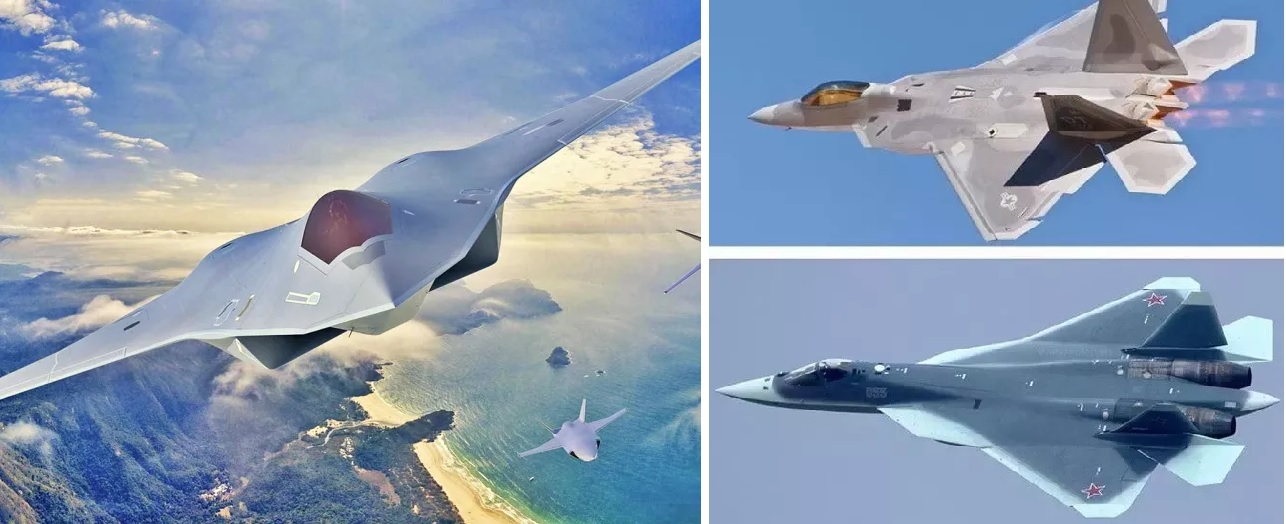 Key Differences Between 5th vs. 6th Generation Fighter Jets
Key Differences Between 5th vs. 6th Generation Fighter Jets
-
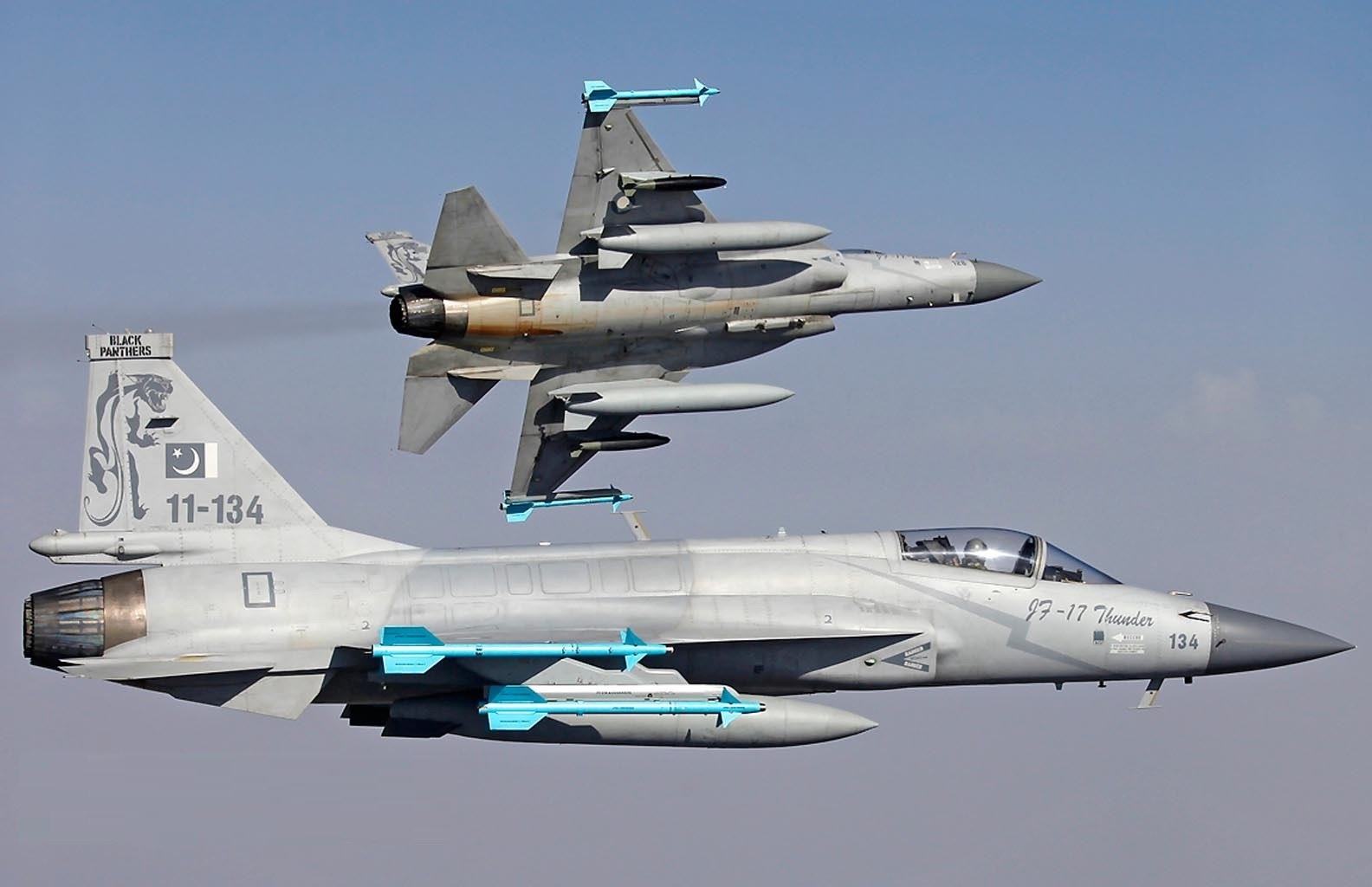 Pakistan Air Force to Unveil Stealth-Enhanced JF-17 Block 4 Fighter Jet by 2028
Pakistan Air Force to Unveil Stealth-Enhanced JF-17 Block 4 Fighter Jet by 2028
-
 Pakistan Announces 15% Increase in Defence Budget for 2024-25 Amid Economic Crisis
Pakistan Announces 15% Increase in Defence Budget for 2024-25 Amid Economic Crisis
-
 India’s AMCA Engine Decision: Safran vs. Rolls-Royce Final Expected by 2025
India’s AMCA Engine Decision: Safran vs. Rolls-Royce Final Expected by 2025
-
 India's TEDBF Program Takes Shape First Flight by 2028: Aiming for Naval Supremacy with Advanced Stealth and Technology
India's TEDBF Program Takes Shape First Flight by 2028: Aiming for Naval Supremacy with Advanced Stealth and Technology
-
 What Would Happen if the USA Left NATO? A Comprehensive Analysis
What Would Happen if the USA Left NATO? A Comprehensive Analysis
Top Trending in 4 Days
-
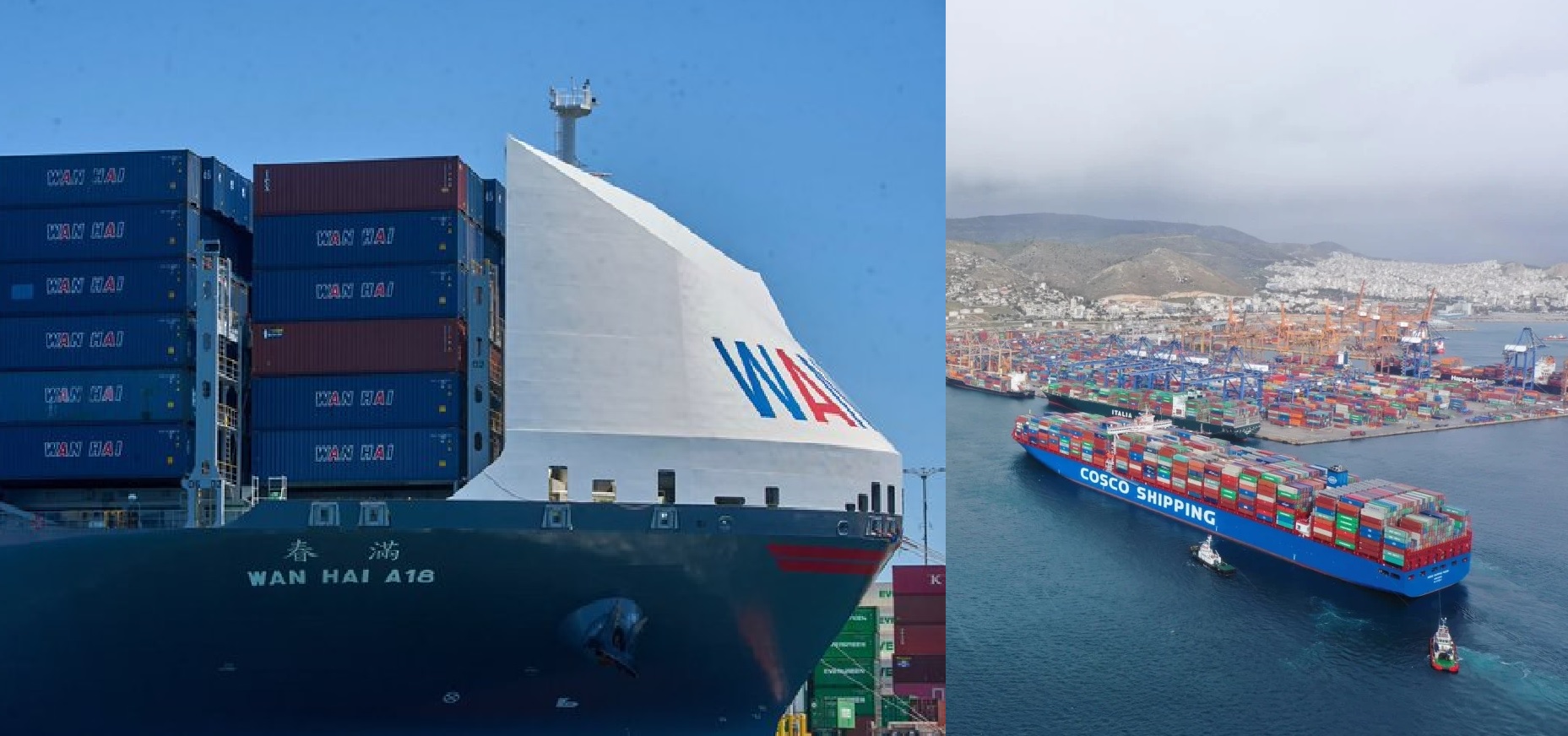 China Unveils the World’s First Thorium-Powered Cargo Ship, Carry up to 14,000 Shipping Containers
China Unveils the World’s First Thorium-Powered Cargo Ship, Carry up to 14,000 Shipping Containers
-
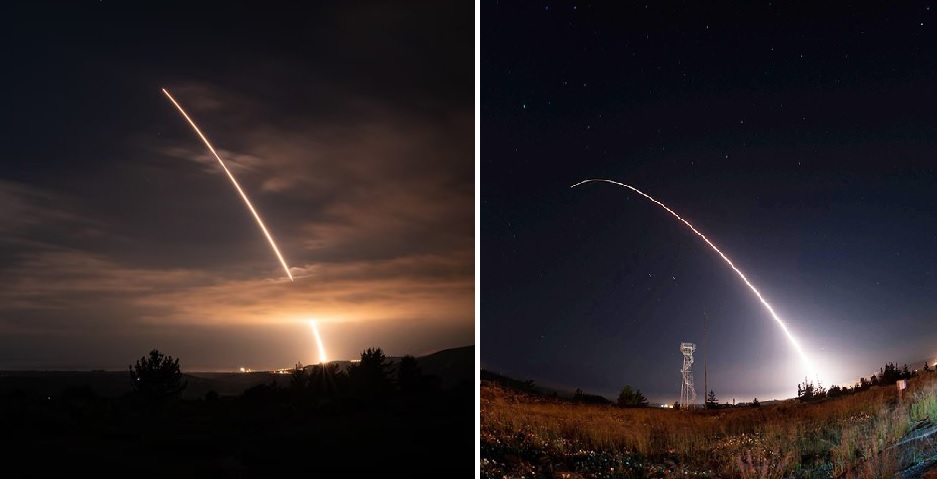 United States Successfully Conducts Unarmed Test Launch of Minuteman III ICBM from California
United States Successfully Conducts Unarmed Test Launch of Minuteman III ICBM from California
-
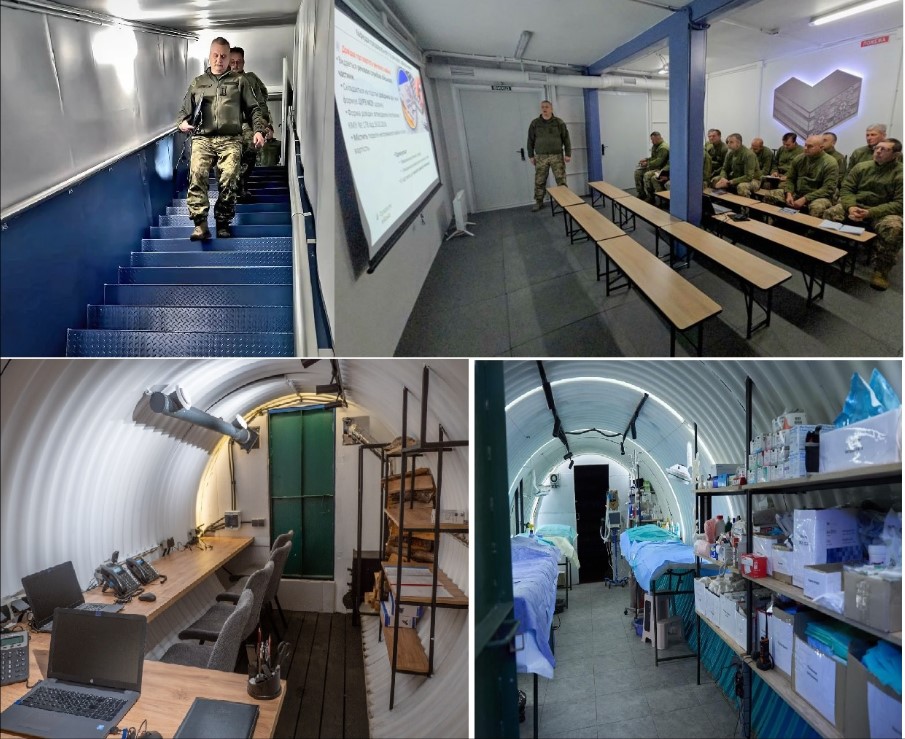 Ukraine Opens First Underground Military Training Hub Built with Metinvest’s Steel Dream Technology
Ukraine Opens First Underground Military Training Hub Built with Metinvest’s Steel Dream Technology
-
 NASA Confirms Anomalous Tail on Interstellar Object 3I/Atlas — Defying Known Comet Behavior
NASA Confirms Anomalous Tail on Interstellar Object 3I/Atlas — Defying Known Comet Behavior
-
 Blogger Claims Il-76 Cargo Plane Shot Down in Sudan Was Recently Purchased from Kyrgyzstan for $12 Million
Blogger Claims Il-76 Cargo Plane Shot Down in Sudan Was Recently Purchased from Kyrgyzstan for $12 Million
-
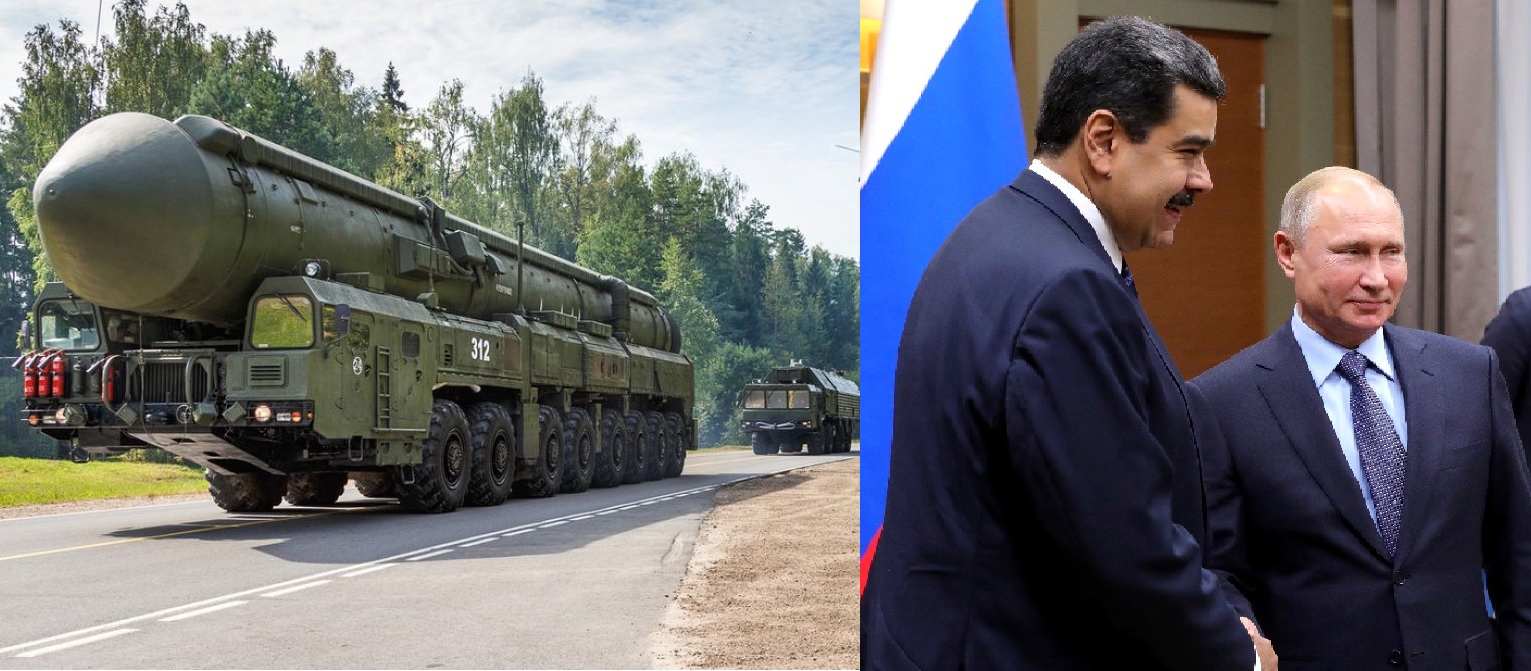 Russia Considers Supplying Venezuela with the “Oreshnik” Missile System — Why It Matters
Russia Considers Supplying Venezuela with the “Oreshnik” Missile System — Why It Matters
-
 China Begins Trial Production at the World’s First Flying Car Smart Factory in Guangzhou
China Begins Trial Production at the World’s First Flying Car Smart Factory in Guangzhou
-
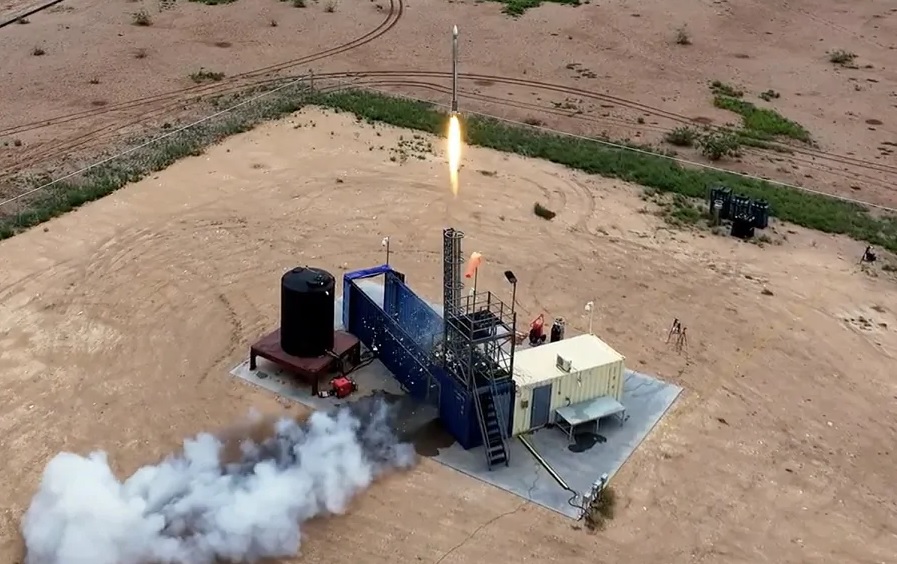 Hanwha Defense USA Invests in Firehawk Aerospace to Accelerate 3D-Printed Rocket Motor Production
Hanwha Defense USA Invests in Firehawk Aerospace to Accelerate 3D-Printed Rocket Motor Production
